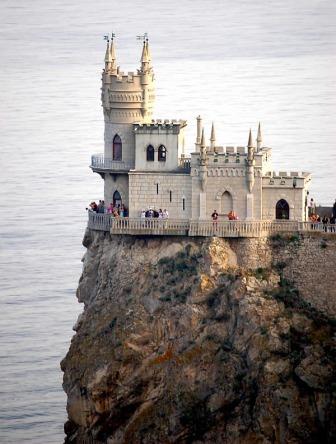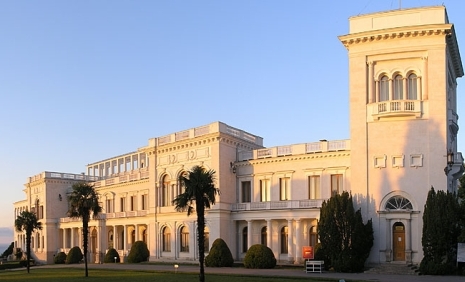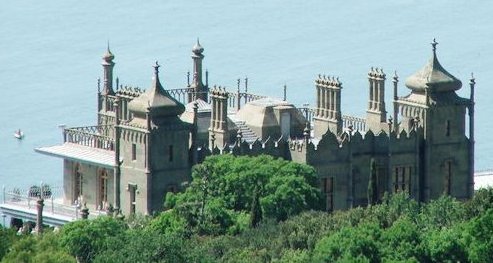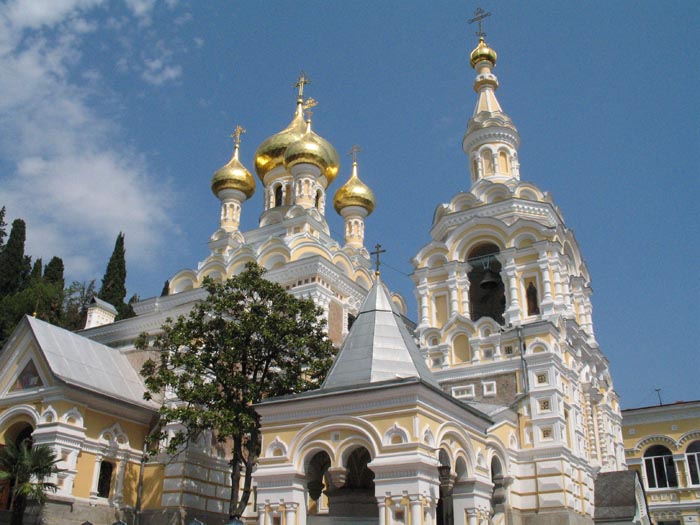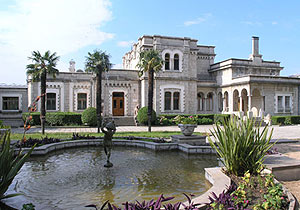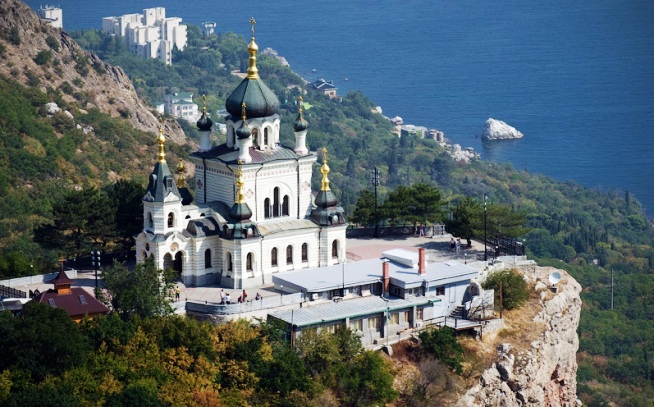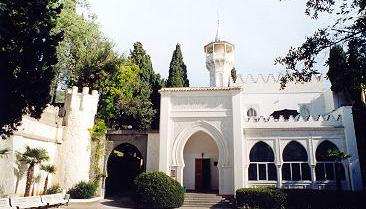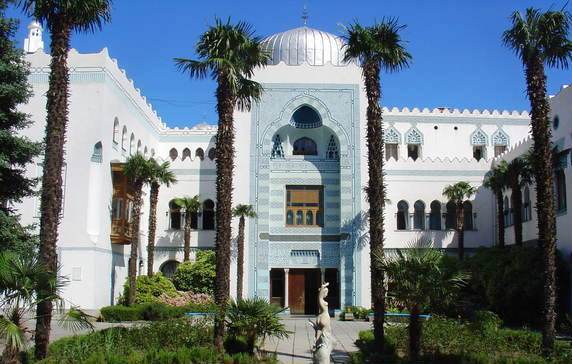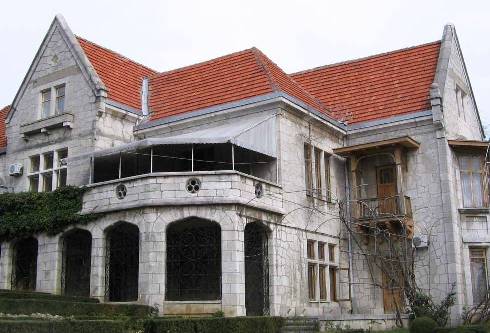Khmilnyk Town and District
Those who are willing to explore historical treasures of Khmilnyk region glorious and mysterious past, to enjoy beautiful landscapes with quiet, slow rivers and miraculously healing spring waters, with big forests and immense fields giving generous crops, with unique scenery ideal for tourism and relax, those people must come to Khmilnyk.
This district is lying on Volyn-Podillya plateau, in the northwest of the Vinnytsia region, bordering Zhytomyr and Khmelnytskyi region, and Lityn and Kalynivka districts of the Vinnytsia region.
The Pivdennyi [southern] Bug, the main river of Vinnytsia region, traverses the territory of Khmilnyk district from west to the east.
Khmilnyk land, like all Podillian area, has had difficult and interesting history. Chronicles tell bright episodes of local people's continuous struggle for freedom, of the first national revolution, occurred in the 17th century, when the idea of independence, produced by the great Bogdan Khmelnytskyi, spread over the whole country. This idea united people for liberation battles, many of which took place on this territory. Khmilnyk region played an important role in Ukrainian national democratic revolution of 1917-1920, which seemed to bring closer the aspiration of many generations of Ukrainians to have their own national state.
Most early and remote history of Khmilnyk region began 10-15 thousand years ago, when first Paleolithic settlements appeared on these lands, later followed by Trypillian civilization.
Shyroka Greblia is famous for the biggest in the region number of important archeological sites, including late Bronze Era settlement (the 10th century BC), Trypillian civilization settlement (4th-3rd millennium BC), Scythian settlement of 7th-3rd centuries BC, settlement belonging to Zarubyntsi culture (the 1st century BC), Cherniakhiv culture settlement (3-4 centuries BC), early Slavic settlement (the 8-9 centuries AD).
In 1973 the students of the local school in Petrykivtsi village found an interesting medallion. The find was sent to the Institute of Archeology at the Academy of Science of the USSR, where scholars made an apprehensive analysis and concluded that the carved stone is an ancient amulet, bearing magic word in Greek: "ABRASAKS". By the way, only two seals of that kind were found in the former Soviet Union, and one of them was found in Petrykivtsi. Total number of archeological sites discovered in Khmilnyk region amount to 75.
Scholar say that Khmilnyk might have appeared on the place of the former Bozhsk town, residence of Bozh, the tribal chief of ancient Slavs (Slavs-Ants). In 1961 an ancient cemetery was discovered near Zhdanivka village, with remains containing bones over two (2) meters long. It might be an ancient burial place of «Ants». «Ant» means «great», «hero», with perfectly correlates with the note given by Syrian Zachary (middle of the 6th century AD) about the people of big dimensions, living between Dniester and Don.
The territory once belonged to the famous Bolokhivska province. In 1259 these «promised lands of grain and honey» were conquered and plundered by Tartars, who were capturing local people and using them for forced works and slave-trading until 17th century.
These troubled times prompted Polish monarchy to grant preferences and privileges to frontier cities and townships, forming natural barriers on the way of Tartars. On the 16th of April 1606 the King of Poland Sigismund III granted additional privileges to Ulanov, later Salnytsia came under the rule of Magdeburg Law. These measures resulted in fortification and growth of Khmilnyk region's cities and towns.
In 1615 Ulaniv was described as an actively trading city with perfectly fortified castle. The following decades gave birth to about 10 villages of Khmilnyk region. Striving to preserve national and confessional identity, and trying to oppose forced Catholization of local inhabitants, the Prince of Ostrog founded higher school in Khmilnyk. Population was protesting against national and religious oppression, rebelling on multiple occasions. Almost the whole territory of Khmilnyk was involved in insurrections and peasants uprisings from time to time under the lead of Kosynskyi, Nalyvaiko, Loboda, Triasylo, But (Pavliuk).
In 1734-1735 a big number of insurgents, local peasants and villagers, joined the Haidamak unit under Mytka lead, performing numerous actions in Khmilnyk district.
Polish and Russian punitive expeditions performed mass executions of local insurgents and their leaders. Khmilnyk at that time was resembling an island amidst the water. Two bridges over Pivdennyi Bug river were connecting Khmilnyk with mainland. There were several churches in the city and one Catholic cathedral. The latter was made of stone, and had two domes and towers. The castle was fenced by paling. Down in the fortress there was a wooden palace, with eight rooms and a big hall, one wing and other accessory buildings.
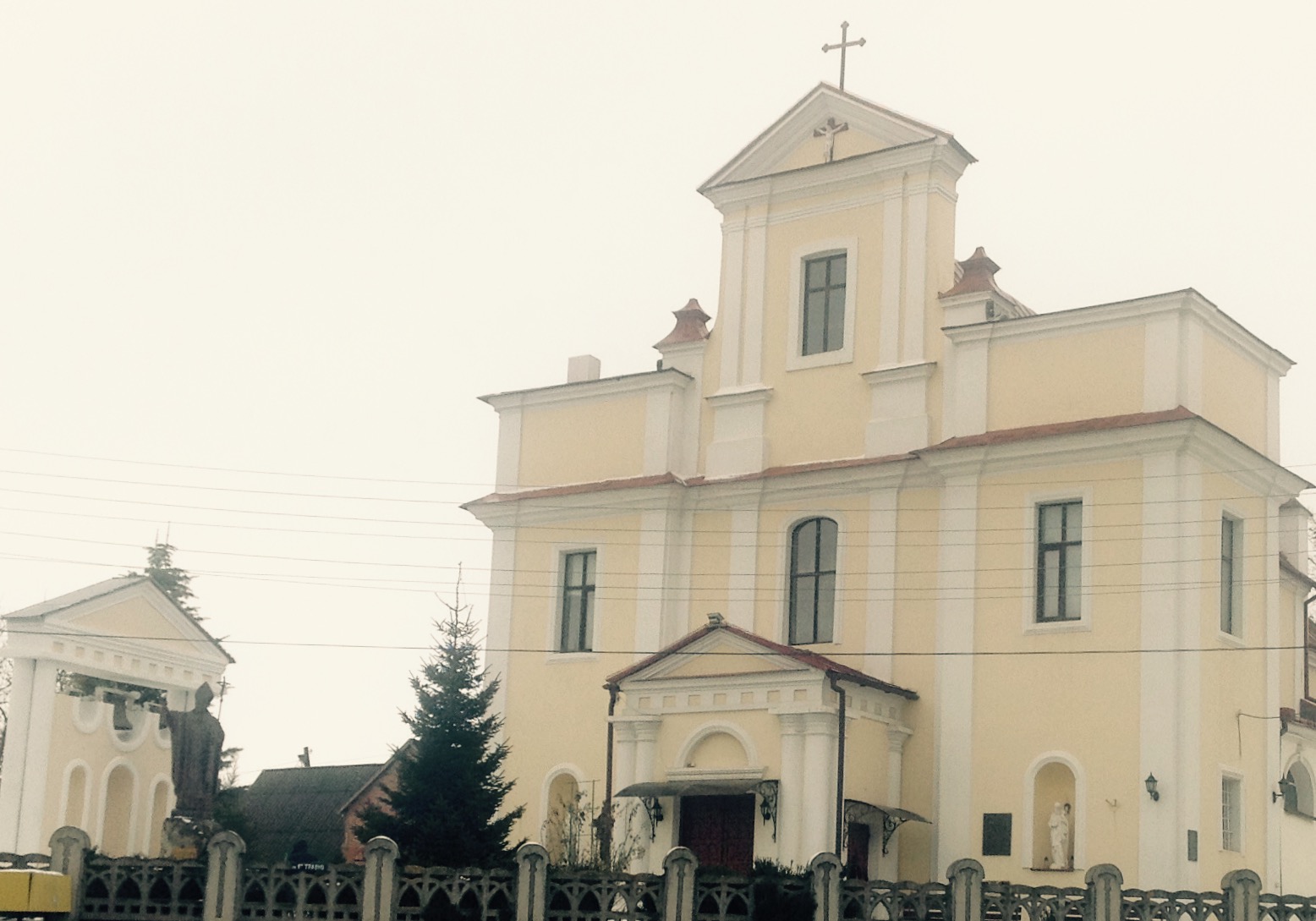 Guests interested in sacral architecture will have chance to visit old Orthodox and Catholic churches and bell towers, hiding their secrets up to present.
Guests interested in sacral architecture will have chance to visit old Orthodox and Catholic churches and bell towers, hiding their secrets up to present. Holy Trinity Catholic Cathedral was built in 1634 (other sources refer to a different date, 1603) in late Gothic style with Renaissance elements. This church is an interesting sample of eclectic architectural style, and a real gem of Khmilnyk city.
Saint Michael Church was built in 1765, on the place of former Golodky Monastery. Miracle-working Icon of Saint Michael was the biggest spiritual value of the Monastery, inherited by the Church and presently worshiped by Khmilnyk community.
Interesting is the history of the Church of the Triumph of the Holy Cross in Ulaniv. The Church was built on the hill, at the river head of Snyvoda river. First reference of the Church dates back to 1648, when Cossacks built wooden church in their fortress. Unfortunately, the Cossacks' fortress was destroyed and the church was sold, along with all relics.
In 1773 local community began the construction of new brick church, designed by well-known Ukrainian architect Ivan Barskyi. In 1777 the new church was consecrated in honor of the Ascension of Our Lord Jesus Christ. Today the church is discharging its high spiritual mission. Many of the local children go to Sunday school, where the Archpriest Iaroslav Mykytyn spiritually educates students.
Several wooden churches constitute the cultural pride of Khmilnyk region, including Saint Michael Church (1845) in Golodky village; Saint Demetrius Church (1849) in Berezna village; Saint Michael Church (1849) in Markushi village; the Church of Intercession of the Holy Virgin (1732) in Mytyntsi village; Saint Parasceva Church (1859) in Torchyn village; Saint Antony Church in Lozova village; the Church of Saint Theodosius of Chernigiv in Vugly village.
Majestic Church of the Holy Nativity of the Prophet the Baptist John rises above the houses of Lisogirka village (former Mazepyntsi). Legend says the village was founded and initially settled by Cossacks of Hetman Mazepa units.
Interesting history and architectural gems are not the only attraction of Khmilnyk region. Rivers, forests, immense fields, mild climate and picturesque landscapes are the natural wealth of the region.
«Khmilnyk Dachia» national wildlife preserve is a favorite place of tourists. Several rare varieties of local flora can be found in the grass cover among the strong oaks there. «Rybchynetska Dubyna» at Rybchyntsi and Markushi villages is another wildlife preserve Khmilnyk region is proud of. Picturesque spots of miscellaneous herbs on the green carpet and branchy spruces joyfully appear in the small forest, populated by falcons, beautiful and quite rare species.
Tourists keen on fishing will be interested in visiting «Sandratskyi» natural reserve, where ponds are populated by sheatfish, pike, pike-perch, tench, carp, bream, crucian carp, bass, and the beaches are populated by thousands of swamp birds. This place is ideal for beavers, who chose it for constructing their huge huts, as well as for muskrats and otters. The biggest beavers' settlement is located near Kyrylivka village (over 25 individuals). Egret, purple and common heron for years nest in «Sandratskyi» natural reserve, as well as mute swans, building their nests in the bulrush.
Splendid landscapes and fertile soils of this village has been always attracting people, coming here to live or just see this everlasting beauty.
Local forest reserves Khmilnytskyi, Bereznianskyi, Loznianskyi, Dubyna (Berezna village), and mysterious Marianivskyi forest (rich of viburnum, blackberries and strawberries) are perfect places to come when on visit in Khmilnyk region. Pictures of unforgettable scenery taken near Chudynivka, Kyrylivka and Shyroka Greblia villages will revive your impressions after you're back home.
Every village in this wonderful land has something special to offer.
Pussy-willows, bent over the quiet still pond, are typical scenery for Voronivtsi. Franz Liszt, Hungarian composer of world fame, piano performer and conductor, in 1847-1848 had quite a long stay at Duchess Carolina Iwanowska-Witgenstein's manor in Voronivtsi, where he composed collection of pieces under the name of «Spikes from Voronivtsi».
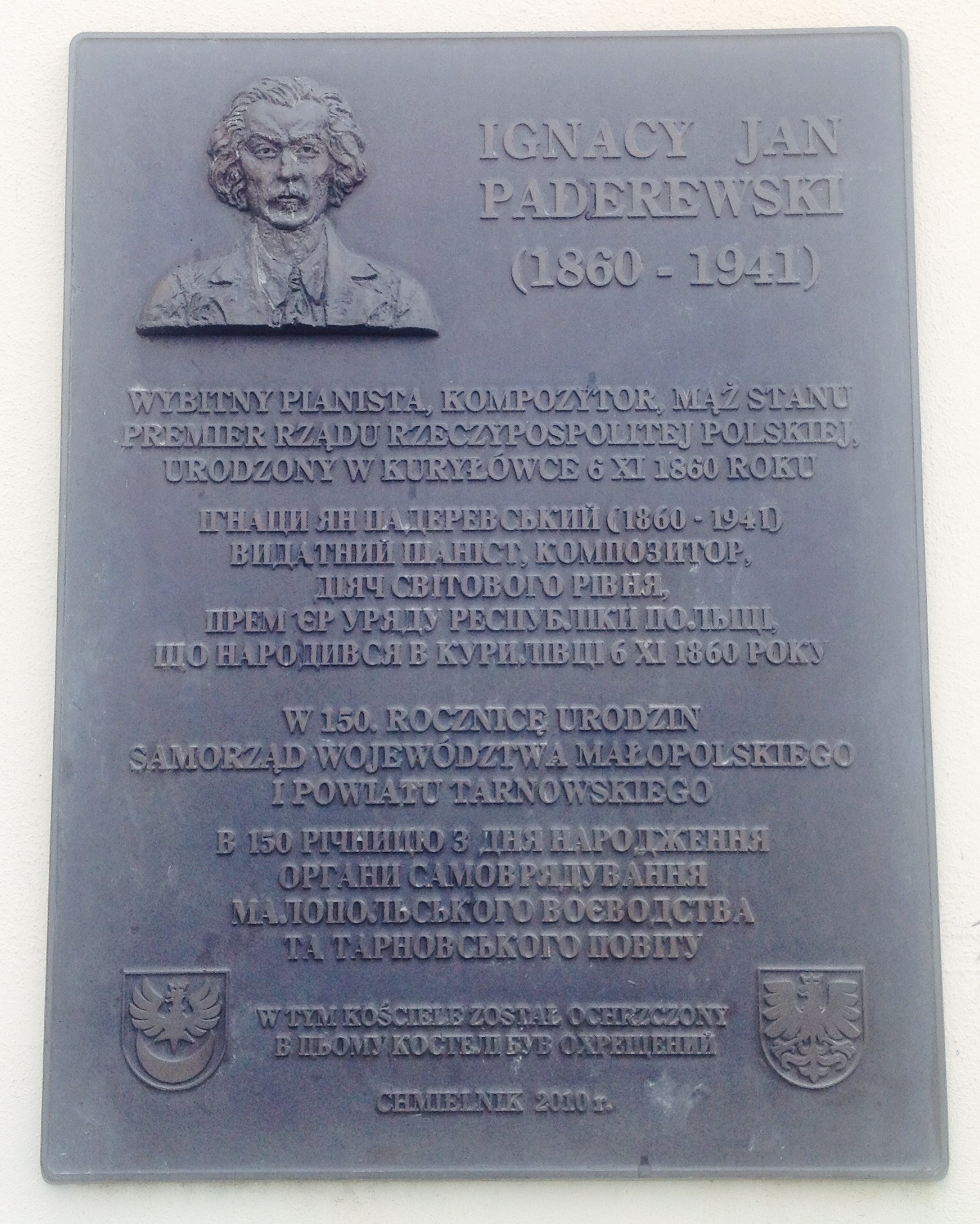 Morozivka village seems to be a paradise, where swans are calmly gliding across the local pond, and the fragrance of ripe pears and apples overwhelm orchards.
Morozivka village seems to be a paradise, where swans are calmly gliding across the local pond, and the fragrance of ripe pears and apples overwhelm orchards. Important is for the people the role of herbs and flowers, generously growing in this region and mentioned in numerous local legends. Plants traditionally occupied distinguished position in local beliefs, rites, customs and legends. Herbs are hallowed during church service, and used to decorate church interior before the big religious holidays such as Spas, Triumph of the Holy Life-Giving Cross of Lord the Savior, Palm Sunday, Assumption of Our Most Holy and Glorious Queen the Mother of God, Midsummer Day.
The name of the city originates from the plant, formerly growing in abundance on these lands — the hop («khmil» in Ukrainian). Khmilnyk Chronicles says: «...In remote times brave and courageous, and swift people lived on the island, where Khmilnyk stands now. They often made raids attacking Tartars, and then retreating to the island, to hide in the thick brushwood of viburnum and hop. The latter was protecting them not only from enemies, but also from the heat and the cold». Khmilnyk Chronicles have been discovered in Golodky local church.
Still is very popular in Khmilnyk the song «Oh, hop!»
The fortress tower was built in 1534 by Jan Tarnawski to protect city from Tartars and Turks, today is one of the most interesting pieces of city's ancient architecture. The tower is built on artificial earth bank, and is 20mt high, and its walls are 1.5mt thick. Local History Museum is currently located in the tower.
Luxurious palace, built as summer residence of the former city owner, Baron Konstantin Xido (of Greek descendance), built in 1911-1915 under the project of well-known architect I. O. Fomin, is one more architectural gem Khmilnyk is proud of. The palace was constructed on the hills above the Pivdennyi Bug river, and has had quite particular history, told by the local expert, Director of Khmilnyk Local History Museum, who enthusiastically collected facts and evidences, con- cerning the Palace, and willingly shares his findings with others.
But what is the city of Khmilnyk today?
Current development of the city is in a great measure associated with significant resources of high quality mineral water, discovered in 1934 almost occasionally, while drilling artesian well. Analysis of the water showed the presence of high levels of radon. Intensive development of rehabilitation facilities and health resorts began in the city and region since then. Numerous health resorts, equipped according to the latest health care technologies, offer their facilities and services to the patients, attended by highly skilled personnel. Other important factors of successful treatment in Khmilnyk are mild climate, fresh air of surrounding forests, presence of radon in waters, and home-made tasty meals. Khmilnyk is a perfect place for all those who wish to undergo diagnostics and efficient treatment, to regain vitality and physical force. Khmilnyk possesses everything to make you really feel good, generously sharing its natural wealth with the guests. Khmilnyk, the city-resort, was officially declared one of the biggest Podillya attractions, by unanimous resolution of local Parliament (Vinnytsia Oblast Council).
«Berezovyi Gai» Health Resort is the leader of health care industry. Located in picturesque woodland, among birches and pines, on the banks of a small forest lake, «Berezovyi Gai» offers its guests the whole range of health services, pleasant leisure hours and peaceful pastime. Specialists offer patients several programs specifically elaborated for the purposes of successful treatment and rehabilitation of pathologies of various systems and organs of human body, including «Healthy Vertebral Column», «Healthy Articulations)), rehabilitation program for patients with pathologies of cardiovascular system, treatment and rehabilitation of patients with hearing impairment and ear, throat and nose pathologies, rehabilitation of patients with bronchi and lungs diseases; complete diagnostics and treatment of various kinds of allergies.
Specialists of «Berezovyi Gai» Health Resort offer efficient treatment of endocrine and reproductive system disorders in both males and females.
Specialists of «Berezovyi Gai» implement exclusive therapeutic and rehabilitation techniques, such as computer aided elongation of vertebral column and articulations; criosauna and infrared sauna; cabin for hydro-vacuum and laser aroma-massage; photon polychromatic matrices etc.
During the stay in «Berezovyi Gai» Health Resort any guest may order medical advice and specialized visits by leading experts in various fields of medicine, from the clinics of Vinnytsia, Kyiv, Kharkiv, Dnipropetrovsk and other Ukrainian cities, within the framework of their collaboration with «Berezovyi Gai». (Previous reservation is required.)
Resort offers to the guests the following facilities: restaurant with exquisite «home-made» meals (complying, anyhow, with dietary prescriptions), fitness center, conference hall, library, fairly developed infrastructure of the city. Leisure activities at your choice: fishing, collecting berries and mushrooms, skiing and sledging in winter.
«Khmilnyk» Health Resort is one more choice for those who are seeking efficient treatment and/or rehabilitation. Located in the beautiful park, this resort during 45 years of its history gave hope and second birth to thousands of people suffering disturbances of vertebral column and articulations. Due to the constant research, performed by the local specialists, striving for better results in therapy and rehabilitation of patients, new techniques are being implemented almost yearly. In 2005 they implemented their latest technique with use of the special device, designed and constructed by engineers from Dnipropetrovsk upon the recommendations of doctors from «Khmilnyk» Health Resort. This device, the only one in the whole country, is the summary of perennial observations and case analysis, made by practicing doctors aiming to bring relief to the people suffering osteochondrosis, this scourge of the 20th century...
Other than vertebral column and articulations pathologies «Khmilnyk» Resort offers treatment of collateral diseases. Speleochamber is an efficient therapy for those who suffer chronic bronchitis or bronchial asthma.
Highly skilled and experienced medical personnel are happy to attend patients at any time and in any season with the only purpose of helping you to become healthier.
If you don't need any therapy, but are seeking for authentic relax, trying to escape from urbanization and stress, and to reinstate your identity in the solitude and in the silence of nature, choose Khmilnyk as your destination for your next vacation. You hardly could find a better place for these purposes than Khmilnyk parks. One of these heavenly places is located on the territory of «Pivdennyi Bug» Rehabilitation Center, subordinated to the Ukraine's Interior Ministry. This park was laid respectively not long ago, but has a specific layout, used for therapeutic purposes. Park landscape was developed based on recommendations of Odessa Research Center for Physiotherapy and Balneology. There are several areas in the park, with trees, shrubs and herbs specifically selected by doctors according to their therapeutic effect. «Health» paths traverse these areas so that simple walk produces powerful curative effect on patients. Other than beautiful scenery the park offers to the guests several grounds for active leisure, including badminton and tennis courts, and rock garden.
It's no mere chance but due to radon water Khmilnyk became a winner among other contenders of «Seven Wonders of Vinnychyna (Vinnytsia Oblast)» competition, being declared one of the 20 most important treasures of Podillya.
Similar competition was held in 2008 on the local level: «Seven Wonders of Khmilnyk» was aimed to select most interesting architectural pieces, most significant events and most important personalities of the city, deserving to present Khmilnyk at international level, calling attention of domestic and foreign tourists.
Winners of the contest were announced by Jury, and they were as follows: «Zamkova Gora» (Castle Hill) Historical Complex; Holy Trinity Catholic Church; radon water, natural treasure of Khmilnyk; Landscape park of Rehabilitation Center, subordinated to South-West Railroad; Khmilnyk Chronicles; Orthodox Churches—symbols of heaven and earth; oeuvres by folk artist Ralph Skulbashevski, true phenomenon of Khmilnyk cultural heritage.
Prominent people, who was born or whose work is associated with this land, is one of the biggest treasure of Khmilnyk.
Ignatiy Jan Paderewski was born in small Kurylivka, but earned international fame as piano performer, conductor, composer, philanthropist and political figure. Writer Mykola Lukiv, born in Kumanivtsi, is known not only in the Vinnytsia oblast, but all over Ukraine. Some of his verses became texts of popular songs, most known is «Sweet Cherry Tree in My Mom's Garden».
Two-storeyed house, where Pelageya Litvinova-Bartan was born and lived, resisted time and can be still viewed in Khmilnyk. This lady was a hard working and industrious researcher, who collected impressive amount of materials and published great number of works on
Ukrainian folk art, history and ethnography. Ukrainian linguist and writer B. D. Antonechko-Davydovych spent several years in Bilyi Rukav village. G. V. Bryling, bright historian, lawyer and ethnographer, spent his yearly years in Dumenky village. Recalling more remote times, these lands are associated with leaders of Ukrainian peasant uprisings Ustym Karmaliuk and Severyn Nalyvaiko.
Great Ukrainian poet Taras Shevchenko had short stay in Khmilnyk and Ulaniv on October 4th, 1846, with the commission to collect folklore and ethnographic materials, entrusted to him by Archeological Committee.
According to historical sources, Ukrainian Hetman Bogdan Khmelnytskyi spent three weeks in Skarzhnytsi. Khmilnyk community erected monument to Bogdan Khmelnytskyi, and the farm in Tarasky village was named in his honor.
Regiments of Maksym Krivonos, colonel of Zaporizka Sich Army, hero of Liberation War of 1648-1654, quartered in Ulaniv. On peninsula, created by two arms of the Snyvoda river, Kryvonis built a stronghold, and made a wooden Orthodox church not far from the castle. In May 1637 the Cossack units under the lead of Pavlo But (surnamed Pavliuk by the people) were raised on these lands.
Ustym Karmaliuk with his sworn brothers had also been here. People from Lozna and Voronovytsia villages narrate legends about ingenious ways used by the people's avenger to find shelter in local forests.
Khmilnyk people are proud of their fellow-townsmen, awarded the highest title of the Hero of the Soviet Union. Only one of them returned home from that War... Solomirka village (currently Poryk) was a small homeland of Vasyl Poryk, active member of French Resistance during the World War II, lieutenant of the Soviet Army. His name is held in reverence by Ukrainian and French peoples up to present. Solomirka community inaugurated Museum to honor their great fellow-villager. Expositions of the Museum narrate epic history of France National Hero Vasyl Vasyliovych Poryk. There is also a monument to Vasyl Poryk in the village.
Khmilnyk region is famous for long and productive folk arts and crafts tradition.
To preserve and promote these traditions community of Lozna village opened Folk Arts and Crafts Museum. Exhibits were gifted to the Museum almost by each household: someone brought embroidered chemise from grandma's chest, others offered fine lace, people brought even old weaver's loom! No wander: craftsmen of this village were traditionally perfect weavers. Other than weaving Lozna can boast of the dynasties of embroidereresses. V. Ostropilska is one of them, she acquired the secrets of trade from her mother, and shared her knowledge and inspiration with her two daughters.
M. Savchyshyna from Salnytsia village found her purpose of life in embroidering pictures. She masterly handles needle and thread, «painting» on canvas her narration, creating half-tints, modifying the mood...
Welcome to Khmilnyk, the blessed land of Podillya, whose health resorts are the best place to relax and regain the vitality, whose forests are ideal to enjoy splendid scenery and to collect bright impressions, whose people are simple and cordial, and always happy to meet you!
Tourist Vinnychyna. Ethnography Guide. Comp. of ukrainian text O. Kizian

